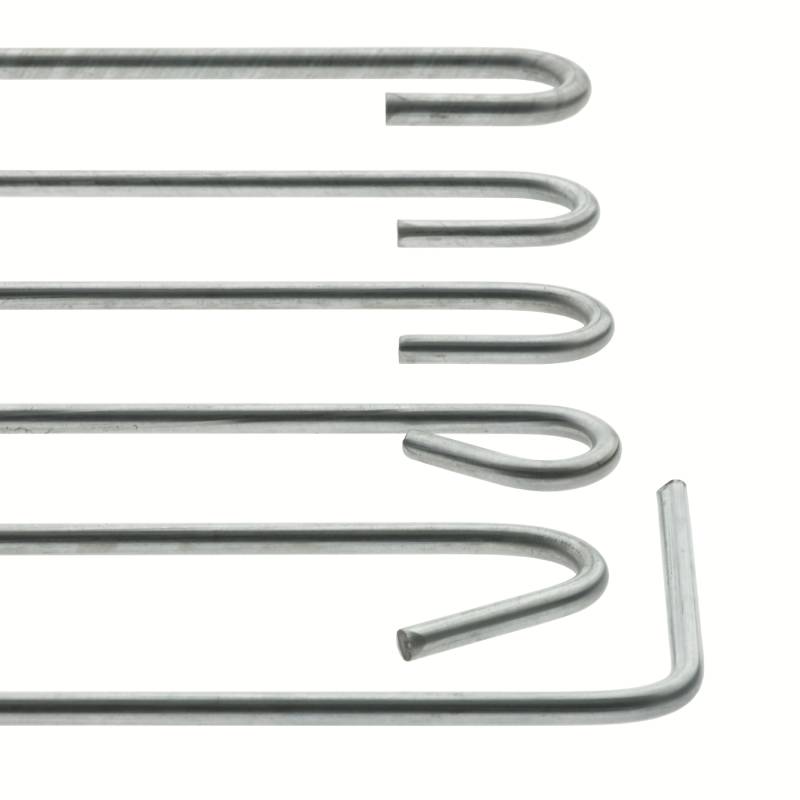
- Mobile Phone
- +8613931874955
- sales@cntcmetal.com
Benefits of Incorporating Wire Mesh in Concrete Structures for Enhanced Durability and Strength
The Use of Wire Mesh in Concrete Enhancing Structural Integrity
In the construction industry, the quest for stronger, more durable structures has led to the innovative use of materials that can significantly enhance the performance of concrete. One such material is wire mesh, which has become a vital component in the reinforcement of concrete elements. This article explores the importance of wire mesh in concrete, its types, applications, benefits, and some considerations for its use.
Understanding Wire Mesh
Wire mesh, also known as welded wire reinforcement (WWR), consists of grids made from steel wires that are welded together at specific intervals. This grid structure provides enhanced tensile strength, allowing concrete to better withstand various forces and reducing the likelihood of cracking and structural failure. There are typically two types of wire mesh used in concrete construction flat wire mesh and plastic-coated wire mesh. Flat wire mesh is primarily used for projects requiring high strength and durability, while plastic-coated options offer additional protection against corrosion, making them suitable for more delicate environments.
Applications of Wire Mesh in Concrete
Wire mesh is utilized in a wide variety of concrete applications. One of the most common uses is in slab-on-grade foundations, where it aids in preventing cracks that may develop over time due to temperature fluctuations and ground movement. In addition to residential foundations, wire mesh is extensively used in commercial buildings, parking lots, and roadways, where large areas of concrete are poured.
Moreover, wire mesh is critical in precast concrete components such as walls, beams, and columns. By integrating wire mesh during the casting process, manufacturers can ensure that each element possesses the necessary strength to support the loads it will encounter during its lifespan. Additionally, wire mesh is used in decorative concrete applications, such as driveways and patios, where the mesh helps maintain the integrity of intricate designs while providing necessary support.
Benefits of Using Wire Mesh in Concrete
use of wire mesh in concrete

One of the primary advantages of using wire mesh in concrete is its ability to improve tensile strength. Concrete is inherently strong in compression but weak in tension. Wire mesh compensates for this limitation, ensuring that the concrete can withstand tensile stresses that arise from various sources, including load bearing, thermal expansion, and shrinkage.
Another significant benefit is the prevention of cracking. Concrete often undergoes shrinkage as it cures, which can lead to cracks that compromise the structure's integrity. The strategic placement of wire mesh in the concrete influences crack distribution, making it less likely for significant cracks to develop. This proactive approach not only enhances safety but also reduces the costs associated with repairs.
Furthermore, wire mesh contributes to the longevity of concrete structures. By preventing cracks and reinforcing load-bearing capabilities, wire mesh allows structures to withstand harsh environmental conditions, chemical exposure, and mechanical stress over time. As a result, buildings and infrastructure that utilize wire mesh tend to have extended life spans and require less maintenance.
Considerations for Use
While wire mesh is an excellent reinforcement option, certain considerations must be kept in mind. Proper placement is crucial; the mesh should be positioned appropriately within the concrete to provide maximum benefits. Additionally, the quality of the wire mesh chosen can vary significantly, and using low-quality materials may compromise the effectiveness of the reinforcement.
Moreover, it is essential to consider local building codes and standards concerning wire mesh usage, as these regulations may dictate specific requirements depending on the type of construction and environmental conditions.
Conclusion
The incorporation of wire mesh in concrete represents a significant advancement in construction practices, offering enhanced strength and durability to a wide range of applications. By understanding its benefits and proper use, builders and architects can create safer, more resilient structures that stand the test of time. As the construction industry continues to evolve, wire mesh will undoubtedly remain a critical component in achieving structural excellence.
share:
-
Why Sacrificial Formwork Is Redefining Underground ConstructionNewsJun.06,2025
-
The Structural Dynamics of Modern Concrete: How Snake Spacers Revolutionize Flexible ReinforcementNewsJun.06,2025
-
Snake Spacers Smart-Lock Concrete Reinforcement with Surgical PrecisionNewsJun.06,2025
-
Snake Spacers: Reinforcement Precision for Modern Concrete ProjectsNewsJun.06,2025
-
Snake Spacers Powering Concrete's Structural DNANewsJun.06,2025
-
Slither into Success: Snake Spacers' Precision Bite for Unbreakable ReinforcementNewsJun.06,2025
-
Sacrificial Formwork: Building Stronger, Faster, and Safer StructuresNewsJun.06,2025



















